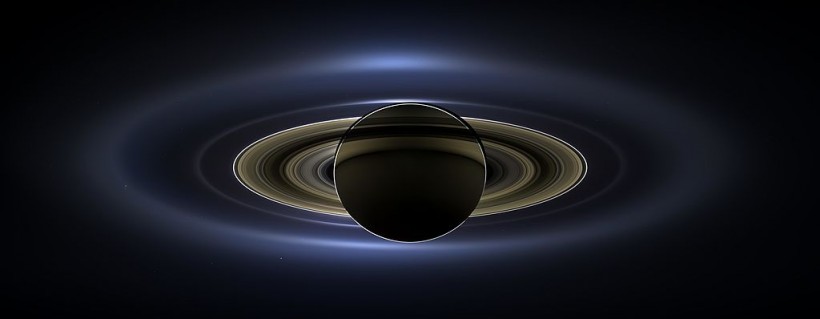The NASA Hubble Space Telescope discovered a never-before-seen Saturn ring system phenomenon.

In this handout from NASA, the planet Saturn is seen backlit by the sun, sent Cassini spacecraft July 19, 2013 in space. NASA unvieled the image, that spans 404,880 miles (651,591 kilometers) across, November 12, 2013. Besides the rings, three planets, Mars, Venus and Earth, are visible in the image.
The international space union used HST together with the Saturn observations of the Cassini probe, Voyager 1, Voyager 2, and the retired International Ultraviolet Explorer mission.
Their findings revealed that the vast ring system of the gas giant actually heats up its atmosphere.
This new phenomenon is expected to help future space observations, especially when it comes to predicting Saturn-like ring systems on other planets.
NASA Hubble Discovers Never-Before-Seen Saturn Ring Phenomenon!
According to NASA's official blog post, the newly discovered Saturn ring phenomenon can help them create a tool for predicting ring systems in other heavenly bodies.

The planet Saturn is seen in the first color composite made of images taken by NASA's Cassini spacecraft on its approach to the ringed planet, October 21, 2002. The probe's arrival is still 20 months away. The planet was 285 million kilometers (177 million miles) away from the spacecraft, nearly twice the distance between the Sun and Earth, when Cassini took images of it using various filters.
Also Read: NASA To Unveil 'Mars Habitat' Before Crew Enters Yearlong Mission in Ground-Based Structure
Based on the image provided by NASA Hubble, the area aligned to Saturn's ring is in darker blue; indicating that its temperature is higher compared to other areas.
NASA said that the most feasible explanation is that the icy particles of the ring system are raining down onto the planet's atmosphere.
The space organization believes that this is causing the atmosphere to heat up.
"This could be due to the impact of micrometeorites, solar wind particle bombardment, solar ultraviolet radiation, or electromagnetic forces picking up electrically charged dust," said NASA.
Other Saturn-Related Discoveries of NASA
Aside from the ring system of Saturn, NASA is also observing the gas giant's moon, Titan.
The international space organization believes that Titan could hold the clues to the origins of life. Because of this, Space.Com reported that NASA's Dragonfly drone will soon be launched toward Titan.
This new spacecraft is capable of flying several miles between Tita's geological points of interest.
Aside from the latest Saturn ring phenomenon, the NASA Hubble Space Telescope and James Webb Space Telescope also made other discoveries recently.
These include the "star-forming" gas dripping from a jellyfish galaxy, which was captured by HST. Meanwhile, JWST also took a photo of swirling, gritty clouds on a distant exoplanet.
For more news updates about NASA HST and its upcoming space discoveries, always keep your tabs open here at TechTimes.
Related Article: NASA Gears Up For Epic, Historic Asteroid Sample Delivery to Utah-When Is It Going Down?









